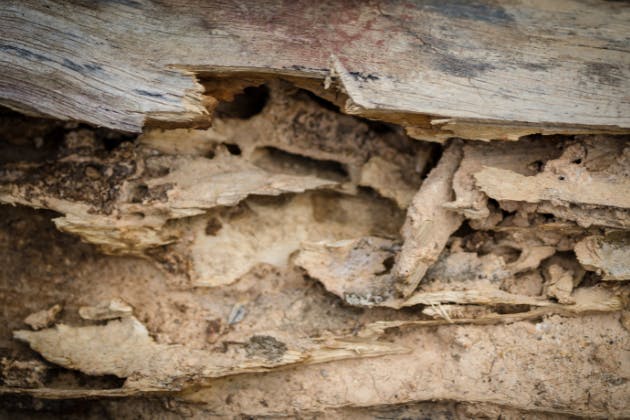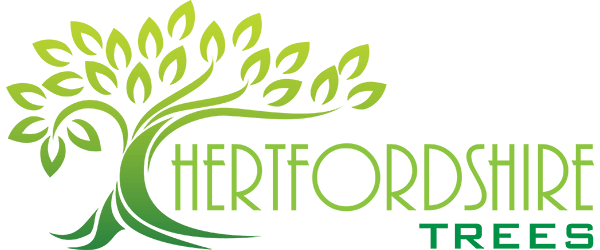Trees are essential components of our environment, giving several advantages ranging from air filtration to increased biodiversity. Trees, like other living beings, are vulnerable to diseases that can jeopardise their health and lifespan. Identifying tree diseases early is essential for protecting these valuable resources and avoiding potential threats. Ignoring indicators of tree illness can result in irreversible damage, structural instability, and even tree mortality, posing a threat to property and safety.
In this blog, our tree surgeons in Harpenden, St Albans and Hertfordshire will teach you how to identify common symptoms of tree diseases.
Common Signs of a Diseased Tree

Abnormal Leaf Behaviour
Leaf discolouration is often the first noticeable sign of tree disease. Healthy leaves should maintain a vibrant green colour throughout the growing season. If you observe yellowing, wilting, or browning leaves, particularly outside of autumn, it's a clear indicator that something's amiss.
While deciduous trees naturally shed leaves in autumn, premature leaf loss during spring or summer suggests underlying health issues. Clinging dead leaves during winter, when trees should be bare, can also indicate disease, particularly in oak trees affected by oak wilt.
Bark Deformities
A tree's bark acts as its protective layer, and any abnormalities here are cause for concern. Missing bark, where large sections have fallen off and aren't regrowing, can indicate severe health problems. This exposes the tree's inner tissues, making it vulnerable to pests and further infection.
Vertical cracks in the trunk or branches, especially if they're large or numerous, suggest internal damage. These cracks can be entry points for pathogens and may compromise the tree's structural integrity.
Bleeding cankers are another serious symptom. These appear as dark or reddish-brown sticky fluid oozing from the bark, often due to fungal infections like Phytophthora. The presence of cankers indicates that the tree is fighting off an infection, and immediate attention is necessary.
Dead Wood and Branches
Dead or dying branches are a clear sign of tree distress. These branches will be dry, brittle, and break easily when bent. In healthy trees, even small twigs should be flexible and show signs of life beneath the bark.
Decaying wood is another indicator of disease. If parts of the tree feel soft or crumbly to the touch, it suggests internal decay, which can severely weaken the tree's structure.
Other Visible Symptoms
- Fungus growth on the bark or branches is a clear sign of infection. While not all fungi are harmful, their presence often indicates underlying health issues or decay.
- A thinning crown, where the tree's canopy becomes noticeably sparse, can indicate various problems, from root issues to foliar diseases.
- Dark liquid or stem bleeds, where fluid seeps through cracks in the bark, often indicate internal problems and should be investigated promptly.
Specific Tree Diseases and Their Symptoms
Fungal Diseases
Dutch Elm Disease is a devastating condition affecting elm trees. Look for browning foliage, often starting at the top of the tree and progressing downwards. You might also notice resin bleeds on the trunk and, upon closer inspection, feeding galleries under the bark caused by elm bark beetles.
Dothistroma Needle Blight primarily affects pine trees. The needles develop yellow spots that later turn red, followed by premature needle drop. This disease can severely defoliate trees if left untreated.
Sweet Chestnut Blight causes early defoliation and produces dark liquid oozing from cracks in the bark. You may also observe fungal growth on affected areas.
Bacterial Diseases
Bacterial Leaf Scorch is common in oak trees but can affect other species. Leaves develop a scorched appearance, with browning starting at the edges and progressing inward. This disease can be difficult to distinguish from drought stress, so professional diagnosis is often necessary.
Pest-Related Issues
Insect infestations can cause various symptoms. Look for holes in leaves, which might indicate beetle or caterpillar activity. Some pests, like bark beetles, leave visible galleries under the bark. Others, like aphids, may cause leaf distortion or the production of honeydew, a sticky substance that promotes sooty mould growth.
How to Inspect Your Tree
Visual Inspection
Regularly examine your trees for signs of disease. Check for new bud growth in spring, which indicates the tree is still alive and healthy. Scrape a small section of bark on a twig – if there's fresh green underneath, it's a good sign. Also, look for new bark growth, particularly in areas where old bark has fallen off.
Inspect the base of the tree for signs of root damage or fungi growth. Mushrooms growing at the tree's base can indicate root rot.
Snap-Snatch Test
The snap-snatch test is a simple way to check branch health. Gently bend a small twig or branch. If it's flexible and doesn't break easily, it's likely healthy. If it snaps off readily, it might be dead or diseased.
Professional Inspection
While these DIY methods are helpful, nothing beats a professional assessment. Certified arborists have the expertise to accurately diagnose tree diseases and recommend appropriate treatments. They can also identify potential hazards that might not be obvious to the untrained eye.
Treatment and Management
Once a disease is identified, various treatment options are available. Fungicides and antibacterials can be effective against many pathogens. Pruning affected branches can prevent disease spread and improve the tree's overall health. Maintaining good sanitation practices, such as cleaning up fallen leaves and avoiding overwatering, can prevent many diseases from taking hold.
Adjusting fertilisation and watering habits can also support tree health. Stressed trees are more susceptible to disease, so ensuring they receive proper nutrition and hydration is crucial.
Contact us today
Expert tree surgeons in St Albans, Harpenden and Hertfordshire. We also offer free quotes on our services.
Get in touch

